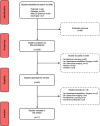Artificial intelligence-aided ultrasound imaging in hepatopancreatobiliary surgery: where are we now?
- PMID: 39160306
- PMCID: PMC11362182
- DOI: 10.1007/s00464-024-11130-0
Artificial intelligence-aided ultrasound imaging in hepatopancreatobiliary surgery: where are we now?
Abstract
Background: Artificial intelligence (AI) models have been applied in various medical imaging modalities and surgical disciplines, however the current status and progress of ultrasound-based AI models within hepatopancreatobiliary surgery have not been evaluated in literature. Therefore, this review aimed to provide an overview of ultrasound-based AI models used for hepatopancreatobiliary surgery, evaluating current advancements, validation, and predictive accuracies.
Method: Databases PubMed, EMBASE, Cochrane, and Web of Science were searched for studies using AI models on ultrasound for patients undergoing hepatopancreatobiliary surgery. To be eligible for inclusion, studies needed to apply AI methods on ultrasound imaging for patients undergoing hepatopancreatobiliary surgery. The Probast risk of bias tool was used to evaluate the methodological quality of AI methods.
Results: AI models have been primarily used within hepatopancreatobiliary surgery, to predict tumor recurrence, differentiate between tumoral tissues, and identify lesions during ultrasound imaging. Most studies have combined radiomics with convolutional neural networks, with AUCs up to 0.98.
Conclusion: Ultrasound-based AI models have demonstrated promising accuracies in predicting early tumoral recurrence and even differentiating between tumoral tissue types during and after hepatopancreatobiliary surgery. However, prospective studies are required to evaluate if these results will remain consistent and externally valid.
Keywords: Artificial intelligence; Hepatopancreatobiliary surgery; Ultrasound.
© 2024. The Author(s).
Conflict of interest statement
Mustafa Bektaş, Catherine Chia, George Burchell, Freek Daams, and professors Jaap Bonjer and Donald van der Peet have no conflicts of interest or financial ties to disclose.
Figures
Similar articles
-
Application of artificial intelligence to ultrasound imaging for benign gynecological disorders: systematic review.Ultrasound Obstet Gynecol. 2025 Mar;65(3):295-302. doi: 10.1002/uog.29171. Epub 2025 Jan 31. Ultrasound Obstet Gynecol. 2025. PMID: 39888598 Free PMC article.
-
Artificial intelligence-aided ultrasound in renal diseases: a systematic review.Quant Imaging Med Surg. 2023 Jun 1;13(6):3988-4001. doi: 10.21037/qims-22-1428. Epub 2023 Apr 20. Quant Imaging Med Surg. 2023. PMID: 37284081 Free PMC article. Review.
-
The State of Artificial Intelligence in Pediatric Surgery: A Systematic Review.J Pediatr Surg. 2024 May;59(5):774-782. doi: 10.1016/j.jpedsurg.2024.01.044. Epub 2024 Feb 13. J Pediatr Surg. 2024. PMID: 38418276
-
Role of artificial intelligence applied to ultrasound in gynecology oncology: A systematic review.Int J Cancer. 2024 Nov 15;155(10):1832-1845. doi: 10.1002/ijc.35092. Epub 2024 Jul 11. Int J Cancer. 2024. PMID: 38989809
-
Diagnostic performance of ultrasound-based artificial intelligence for predicting key molecular markers in breast cancer: A systematic review and meta-analysis.PLoS One. 2024 May 31;19(5):e0303669. doi: 10.1371/journal.pone.0303669. eCollection 2024. PLoS One. 2024. PMID: 38820391 Free PMC article.
References
Publication types
MeSH terms
LinkOut - more resources
Full Text Sources



